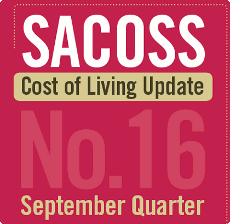Cost of living pressures impact on all households, but when costs for basic necessities like housing, utilities, food, health and transport increase, it is a particular problem for low income households. Those basic necessities make up a greater proportion of the expenditure of low income households than for other households, so price rises have a disproportionate impact on those who already have less room to move in their household budget. This is especially the case when incomes and income support payments fail to keep pace with price rises.
 The impact of these price rises is also hidden by the official inflation statistics which track changes to an average basket of goods and services (based on Household Expenditure Surveys). However, this basket includes goods and services that are not part of the expenditure of all households. For instance, it is little help to households struggling to pay electricity bills on the Newstart allowance if the price of overseas travel comes down – yet these are weighed against eachother in the official Consumer Price Index.
The impact of these price rises is also hidden by the official inflation statistics which track changes to an average basket of goods and services (based on Household Expenditure Surveys). However, this basket includes goods and services that are not part of the expenditure of all households. For instance, it is little help to households struggling to pay electricity bills on the Newstart allowance if the price of overseas travel comes down – yet these are weighed against eachother in the official Consumer Price Index.
SACOSS’ cost of living advocacy therefore focuses on the plight of poorer households and demands policies that will provide relief to vulnerable and disadvantaged South Australians. Our advocacy includes regular media commentary, lobbying of governments, and the production of quarterly Cost of Living Updates. These research reports utilise three different ABS data sets to provide an indication of cost of living pressures for low income households. Each report consists of a two page summary of income changes and price movements in the last quarter, plus an in depth analysis of cost of living pressures in a particular expenditure area. The reports also include recommendations for policies to address cost pressures or to provide relief to low income households.
Read SACOSS Cost of Living Updates
SACOSS is also looking to develop affordability stress indicators for energy, water and telecommunications. Click here for more information.
